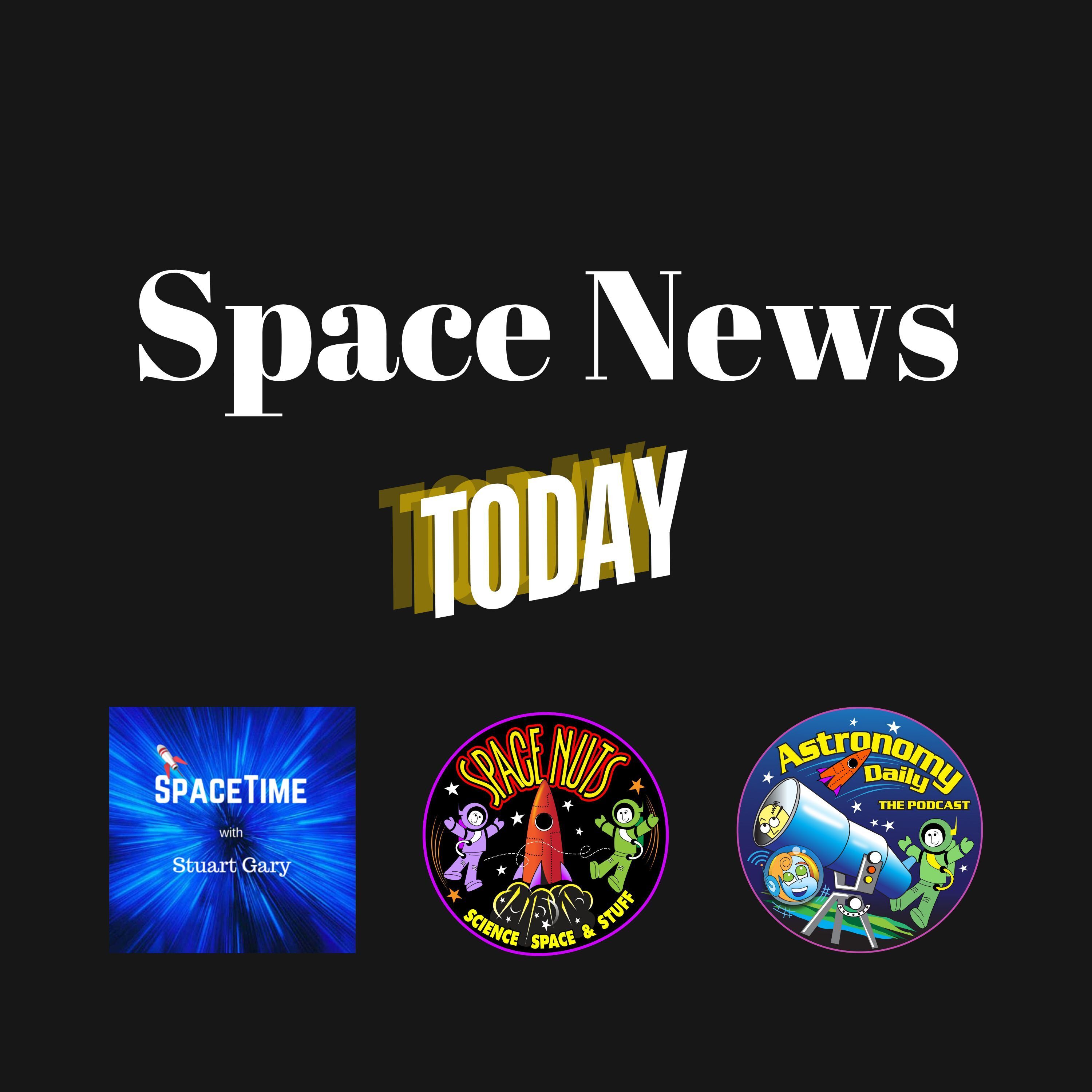Listen "Galactic Influences and Supermoons: Exploring Earth’s Crust and Taikonaut Trials"
Episode Synopsis
(00:00:00) Galactic Influences and Supermoons: Exploring Earth's Crust and Taikonaut Trials
(00:00:42) Earth's geology written in the stars
(00:10:30) Taikonauts stranded in space following space junk impact
(00:12:38) Biggest Supermoon of the year
(00:14:59) The Science Report
(00:17:20) Skeptics guide to jogging big foots
In this episode of SpaceTime , we delve into fascinating intersections of geology and astronomy that could reshape our understanding of Earth's history and the cosmos.
Earth's Geology Written in the Stars
A groundbreaking study reveals a compelling connection between the structure of our Milky Way galaxy and the evolution of Earth's crust. Researchers from Curtin University have found that meteorite impacts, influenced by the solar system's journey through the galaxy, have played a significant role in shaping our planet's geology. The episode explores how ancient zircon crystals are providing a unique archive of Earth's interactions with the galaxy, suggesting that astrophysical processes may have directly influenced the continents beneath our feet and the conditions that made life possible.
Taikonaut Stranded in Space
In a dramatic turn of events, three Chinese taikonauts are stranded in orbit after their Shenzhou 20 spacecraft was struck by suspected space junk just hours before their scheduled return to Earth. This segment discusses the implications of the impact, the ongoing assessments by mission managers, and the potential need for a replacement capsule to ensure the crew's safe return. The episode also reflects on past incidents involving space debris and the measures taken to protect the Tiangong Space Station.
The Biggest Supermoon of the Year
Skywatchers around the globe were treated to the biggest supermoon of the year, appearing 7% larger and 30% brighter than a typical full moon. This segment explains the science behind the phenomenon, including the moon's elliptical orbit and its impact on tides. We also discuss how the term "supermoon" became popularised and the frequency of such lunar events, with several more supermoons on the horizon.
www.spacetimewithstuartgary.com (https://www.spacetimewithstuartgary.com/)
✍️ Episode References
Physical Review
https://journals.aps.org/pr/ (https://journals.aps.org/pr/)
Nature
https://www.nature.com/ (https://www.nature.com/)
Become a supporter of this podcast: https://www.spreaker.com/podcast/spacetime-your-guide-to-space-astronomy--2458531/support (https://www.spreaker.com/podcast/spacetime-your-guide-to-space-astronomy--2458531/support?utm_source=rss&utm_medium=rss&utm_campaign=rss) .
Earth's Geology Written in the Stars
Taikonaut Stranded in Space
The Biggest Supermoon of the Year
Earth's Geology Written in the StarsTaikonaut Stranded in SpaceThe Biggest Supermoon of the Year
Episode link: https://play.headliner.app/episode/30018557?utm_source=youtube
(00:00:42) Earth's geology written in the stars
(00:10:30) Taikonauts stranded in space following space junk impact
(00:12:38) Biggest Supermoon of the year
(00:14:59) The Science Report
(00:17:20) Skeptics guide to jogging big foots
In this episode of SpaceTime , we delve into fascinating intersections of geology and astronomy that could reshape our understanding of Earth's history and the cosmos.
Earth's Geology Written in the Stars
A groundbreaking study reveals a compelling connection between the structure of our Milky Way galaxy and the evolution of Earth's crust. Researchers from Curtin University have found that meteorite impacts, influenced by the solar system's journey through the galaxy, have played a significant role in shaping our planet's geology. The episode explores how ancient zircon crystals are providing a unique archive of Earth's interactions with the galaxy, suggesting that astrophysical processes may have directly influenced the continents beneath our feet and the conditions that made life possible.
Taikonaut Stranded in Space
In a dramatic turn of events, three Chinese taikonauts are stranded in orbit after their Shenzhou 20 spacecraft was struck by suspected space junk just hours before their scheduled return to Earth. This segment discusses the implications of the impact, the ongoing assessments by mission managers, and the potential need for a replacement capsule to ensure the crew's safe return. The episode also reflects on past incidents involving space debris and the measures taken to protect the Tiangong Space Station.
The Biggest Supermoon of the Year
Skywatchers around the globe were treated to the biggest supermoon of the year, appearing 7% larger and 30% brighter than a typical full moon. This segment explains the science behind the phenomenon, including the moon's elliptical orbit and its impact on tides. We also discuss how the term "supermoon" became popularised and the frequency of such lunar events, with several more supermoons on the horizon.
www.spacetimewithstuartgary.com (https://www.spacetimewithstuartgary.com/)
✍️ Episode References
Physical Review
https://journals.aps.org/pr/ (https://journals.aps.org/pr/)
Nature
https://www.nature.com/ (https://www.nature.com/)
Become a supporter of this podcast: https://www.spreaker.com/podcast/spacetime-your-guide-to-space-astronomy--2458531/support (https://www.spreaker.com/podcast/spacetime-your-guide-to-space-astronomy--2458531/support?utm_source=rss&utm_medium=rss&utm_campaign=rss) .
Earth's Geology Written in the Stars
Taikonaut Stranded in Space
The Biggest Supermoon of the Year
Earth's Geology Written in the StarsTaikonaut Stranded in SpaceThe Biggest Supermoon of the Year
Episode link: https://play.headliner.app/episode/30018557?utm_source=youtube
More episodes of the podcast Space News Today
Cosmic Questions: Time, Mass, and the Spectacle of Auroras | Space Nuts: Astronomy Insights &...
08/12/2025
Erupting Exo Comets, Boiling Ice Moons & Martian Climate Revelations | Space Nuts: Astronomy...
06/12/2025
Lightning Strikes Mars: The First Detection of Electrical Discharges and NASA’s New Look at...
06/12/2025
 ZARZA We are Zarza, the prestigious firm behind major projects in information technology.
ZARZA We are Zarza, the prestigious firm behind major projects in information technology.
